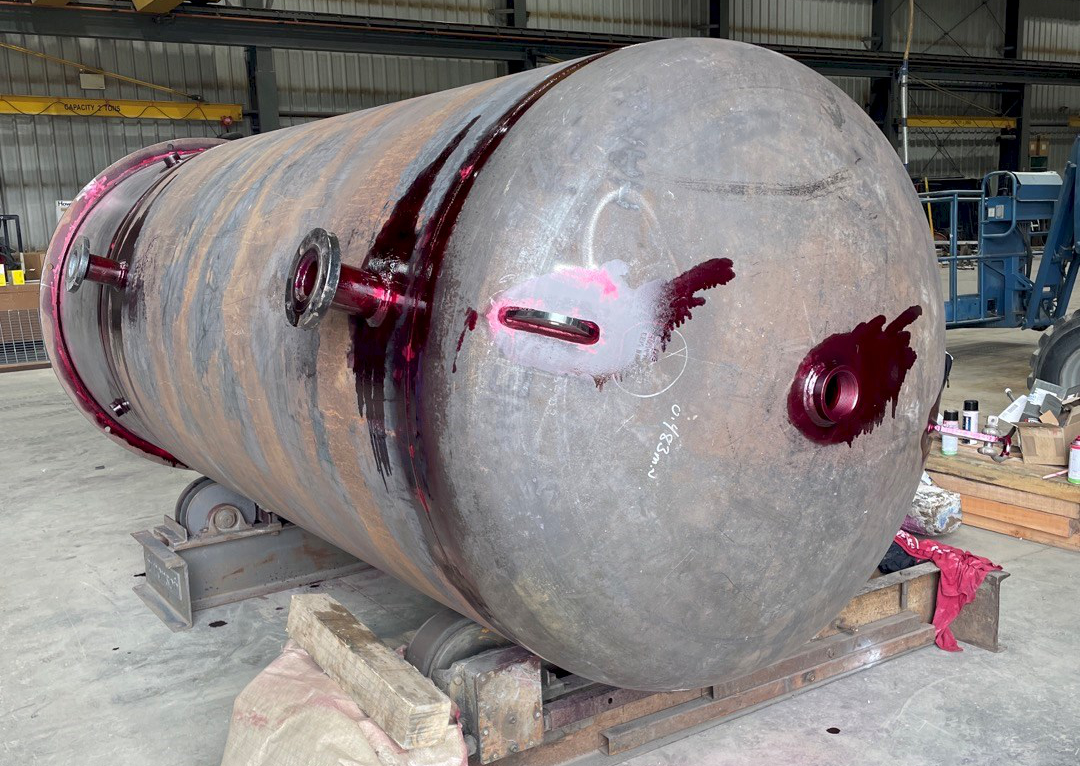A Comprehensive Review of Container Welding Inspection Criteria and Methodologies for Improved Weld Quality and Efficiency
The value of welding assessment criteria in the manufacturing of tanks can not be overemphasized, as they act as the foundation for making certain weld stability and functional integrity. Numerous inspection techniques, consisting of aesthetic assessments and advanced non-destructive screening techniques, are important in determining prospective imperfections that can compromise efficiency. Adhering to regulatory requirements not just enhances weld quality however additionally mitigates the risk of expensive failings. As we discover the subtleties of these techniques, it comes to be necessary to take into consideration exactly how a methodical approach can change current techniques and bring about substantial improvements in outcomes.
Significance of Welding Inspection Criteria

Welding examination criteria incorporate a range of standards, consisting of product specs, welding treatments, and certifications of personnel associated with the welding process. By imposing these standards, organizations can methodically determine and rectify possible defects, consequently minimizing the chance of expensive repair work or disastrous failings. Rigorous assessment practices cultivate a culture of accountability and precision, motivating welders to keep high levels of craftsmanship.

Usual Welding Evaluation Strategies


Ultrasonic Testing (UT) is one more prevalent method, utilizing high-frequency acoustic waves to detect inner problems that may not show up on the surface. This technique is particularly reliable for determining voids or inclusions within the weld metal. Magnetic Bit Evaluating (MT) is additionally commonly used, especially for ferromagnetic products, as it reveals surface and near-surface flaws via the application of magnetic fields and ferrous bits.
In Addition, Fluid Penetrant Testing (PT) discovers surface-breaking issues by applying a penetrant to the weld and after that making use of a developer to extract the penetrant. Each of these strategies adds to a detailed inspection strategy, ensuring that welds satisfy the strict quality standards required in storage tank building.
Regulative Specifications and Compliance
Regulative requirements and compliance are important elements in guaranteeing the security and integrity of welded frameworks in tank building - Tank Welding Inspection. These criteria serve to establish minimum requirements for material homes, welding procedures, and evaluation techniques, thereby minimizing the risk of architectural failures and improving total efficiency
Trick organizations, such as the American Society of Mechanical Engineers you could check here (ASME) and the American Welding Culture (AWS), give guidelines that are widely taken on in the industry. Compliance with these requirements not only makes sure adherence to ideal practices but likewise satisfies legal and contractual responsibilities, guarding the interests of stakeholders.
Regulatory bodies frequently mandate adherence to certain codes, such as ASME Code Section IX for welding qualifications and API 650 for bonded tanks. These codes outline needs for welding strategies, certifications of workers, and screening methods to validate weld integrity.
Routine audits and inspections are important to maintaining compliance, as they aid determine variances from established criteria. Non-compliance can cause significant fines, project delays, and safety and security dangers. Hence, a robust understanding of governing standards and a dedication to conformity are critical in accomplishing high-quality and resilient welded storage tank structures.
Non-Destructive Evaluating Techniques
How can the integrity of bonded structures be assured without causing damage? Non-destructive screening (NDT) techniques use a durable remedy, making it possible for inspectors to examine weld high quality without jeopardizing the product - Tank Welding Inspection. Among the most typical NDT methods are ultrasonic screening (UT), radiographic screening (RT), magnetic fragment screening (MT), and dye penetrant testing (PT)
Ultrasonic testing utilizes high-frequency acoustic waves to spot interior flaws and define product buildings. It supplies accurate dimensions and is specifically efficient for thick materials. Radiographic testing involves passing X-rays or gamma rays through the weld, developing images that disclose structural problems such as cracks or voids. This technique is vital for evaluating the honesty of complex welds.
Magnetic particle testing is suited for ferromagnetic products, where magnetic fields expose surface area and near-surface gaps. Dye penetrant testing makes use of a liquid dye to highlight surface-breaking problems, making it an effective method for non-porous products.
Each of these NDT approaches has distinct benefits, allowing for extensive evaluations customized to particular materials and welding processes. By implementing these strategies, industries can make sure the reliability and safety and security of bonded structures, eventually enhancing overall efficiency.
Enhancing Weld Quality With Evaluation
Efficient inspection plays a critical function in improving weld top quality, working as a crucial checkpoint in the construction process. By determining prospective flaws early, assessments reduce the threat of endangered structural integrity and guarantee compliance with market requirements. Using a combination of visual assessments, non-destructive testing (NDT) approaches, and mechanical analyses, examiners can detect problems such as porosity, fractures, and insufficient fusion.
Implementing a robust evaluation visit our website protocol not only improves the general top quality of welds however additionally cultivates a culture of liability amongst welders and fabricators. Routine training and certification of evaluation personnel ensure that they are furnished with the needed skills to acknowledge and address prospective troubles efficiently. This aggressive technique decreases rework and associated expenses, eventually adding to project effectiveness.
Furthermore, comprehensive paperwork of examination findings gives valuable insights right into repeating concerns, promoting constant renovation in welding techniques. By leveraging advanced technologies, such as automated ultrasonic testing or electronic radiography, weld quality can be improved through extra accurate evaluations. Finally, a rigorous evaluation process is important click for more info in accomplishing high-grade welds, ensuring security, integrity, and durability in container fabrication.
Final Thought
In verdict, the implementation of strenuous container welding assessment requirements and methodologies is important for guaranteeing weld integrity and efficiency. By using a combination of visual inspections, non-destructive testing methods, and adherence to regulative criteria, organizations can successfully identify and alleviate potential flaws. Promoting a culture of accountability amongst welders further improves the quality of welding processes. Inevitably, these methods contribute to lowered structural failures, reduced repair prices, and improved functional performance within the industry.
Comments on “Advanced Techniques in Modern Tank Welding Inspection”